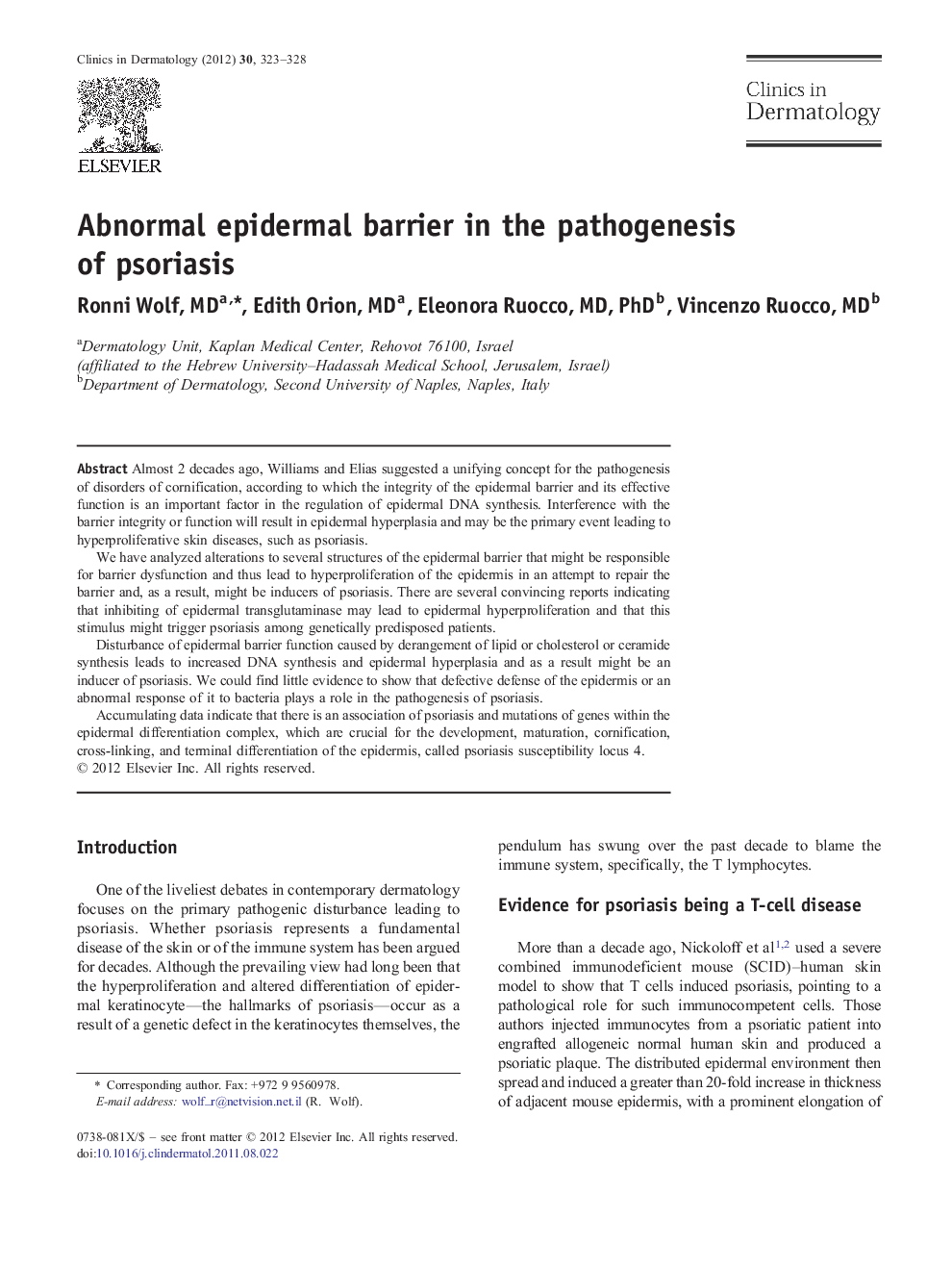| Article ID | Journal | Published Year | Pages | File Type |
|---|---|---|---|---|
| 3194592 | Clinics in Dermatology | 2012 | 6 Pages |
Almost 2 decades ago, Williams and Elias suggested a unifying concept for the pathogenesis of disorders of cornification, according to which the integrity of the epidermal barrier and its effective function is an important factor in the regulation of epidermal DNA synthesis. Interference with the barrier integrity or function will result in epidermal hyperplasia and may be the primary event leading to hyperproliferative skin diseases, such as psoriasis.We have analyzed alterations to several structures of the epidermal barrier that might be responsible for barrier dysfunction and thus lead to hyperproliferation of the epidermis in an attempt to repair the barrier and, as a result, might be inducers of psoriasis. There are several convincing reports indicating that inhibiting of epidermal transglutaminase may lead to epidermal hyperproliferation and that this stimulus might trigger psoriasis among genetically predisposed patients.Disturbance of epidermal barrier function caused by derangement of lipid or cholesterol or ceramide synthesis leads to increased DNA synthesis and epidermal hyperplasia and as a result might be an inducer of psoriasis. We could find little evidence to show that defective defense of the epidermis or an abnormal response of it to bacteria plays a role in the pathogenesis of psoriasis.Accumulating data indicate that there is an association of psoriasis and mutations of genes within the epidermal differentiation complex, which are crucial for the development, maturation, cornification, cross-linking, and terminal differentiation of the epidermis, called psoriasis susceptibility locus 4.
